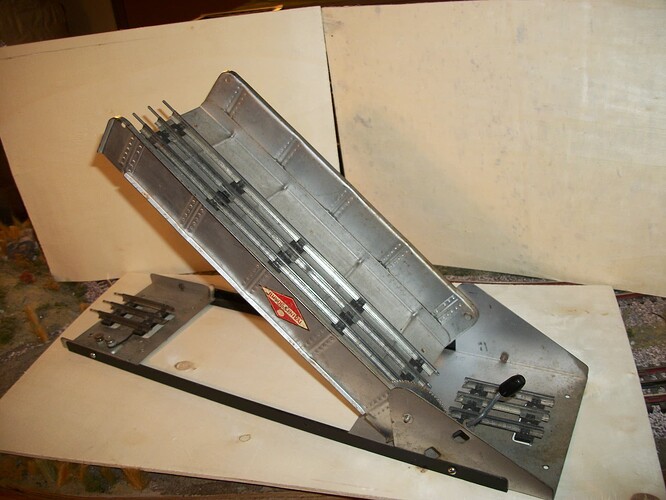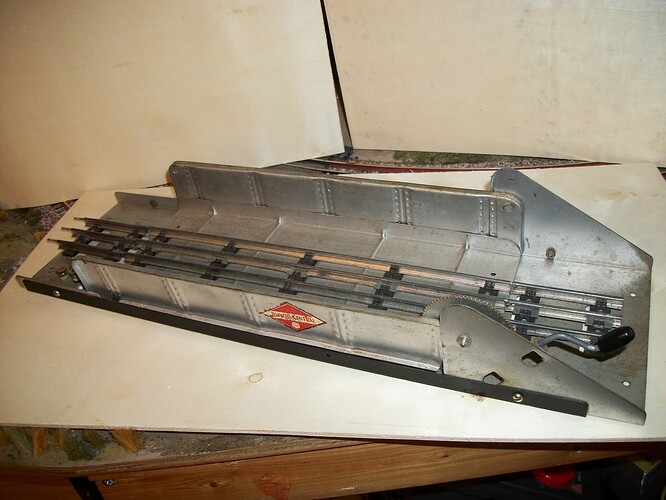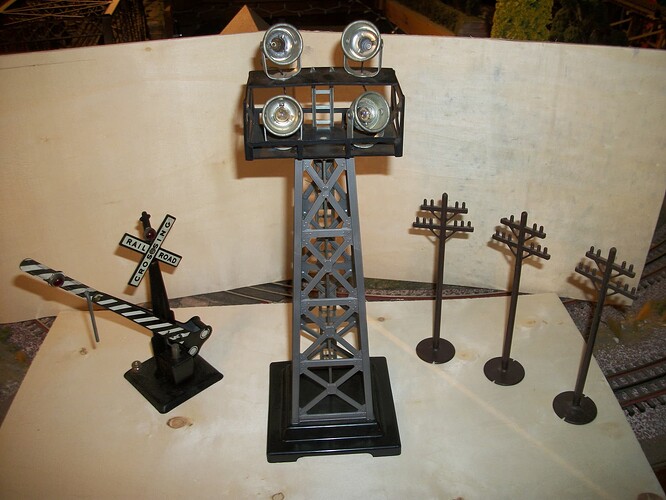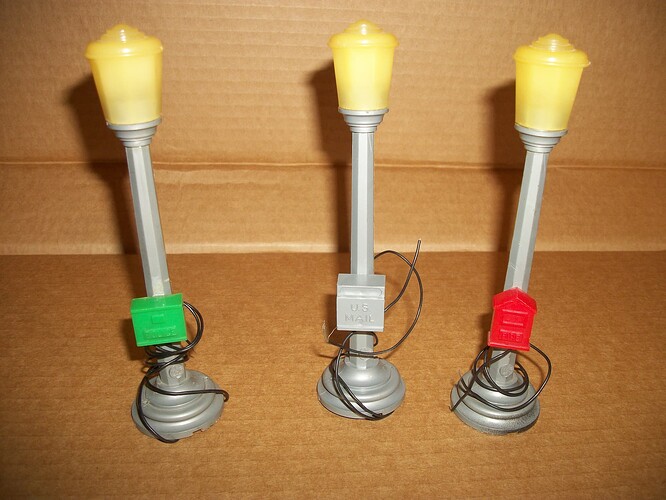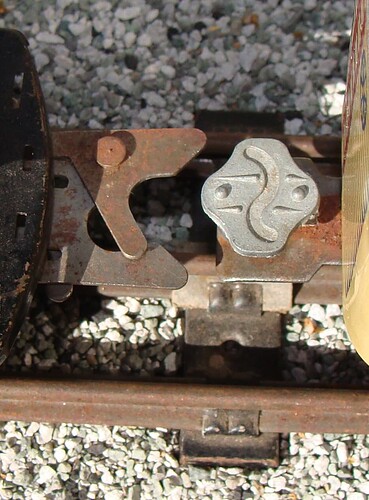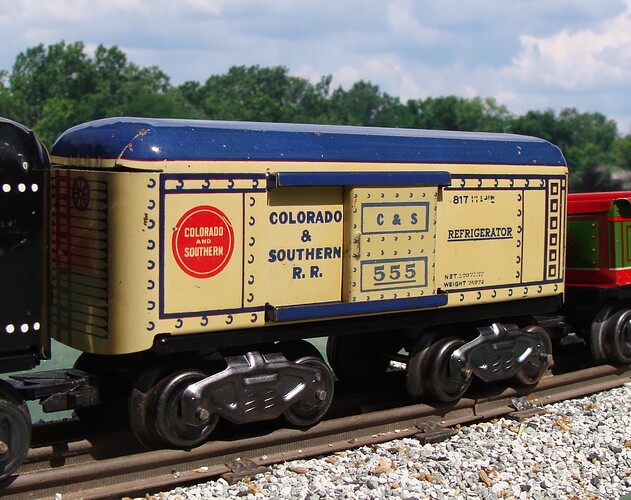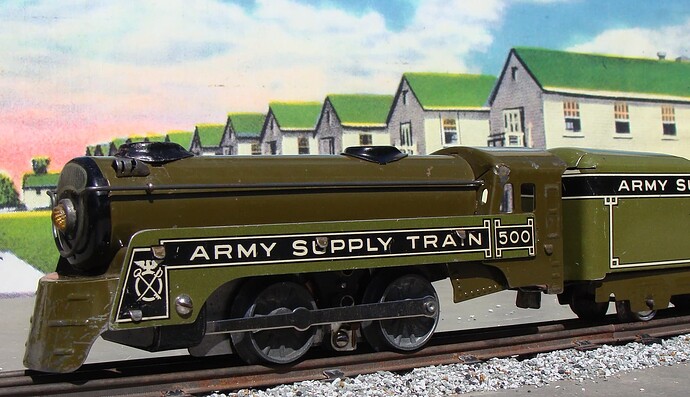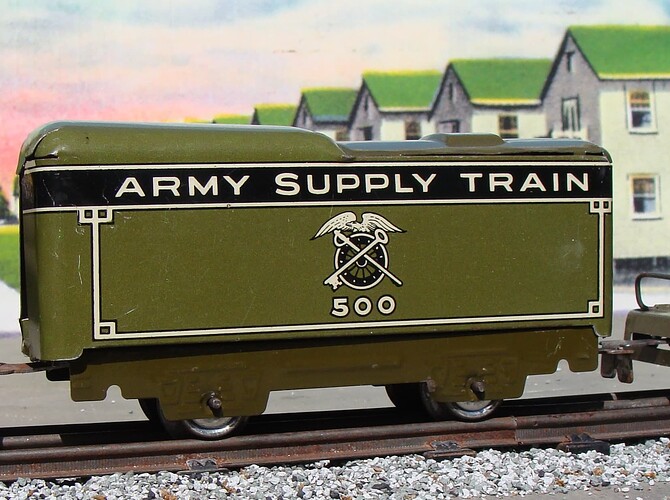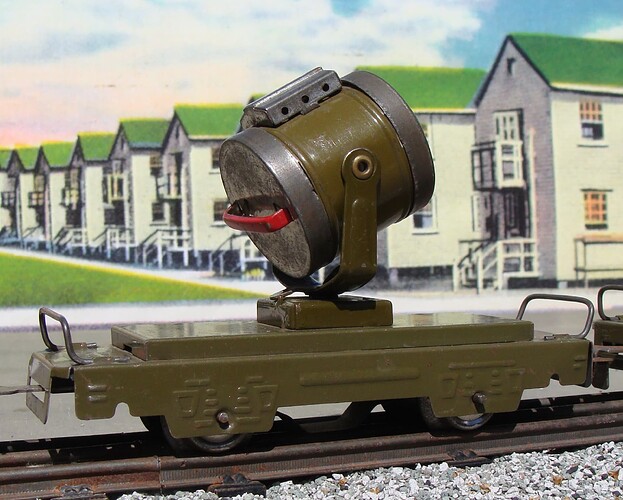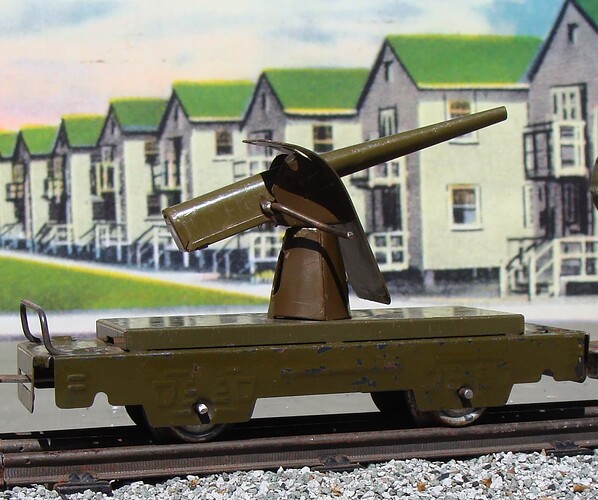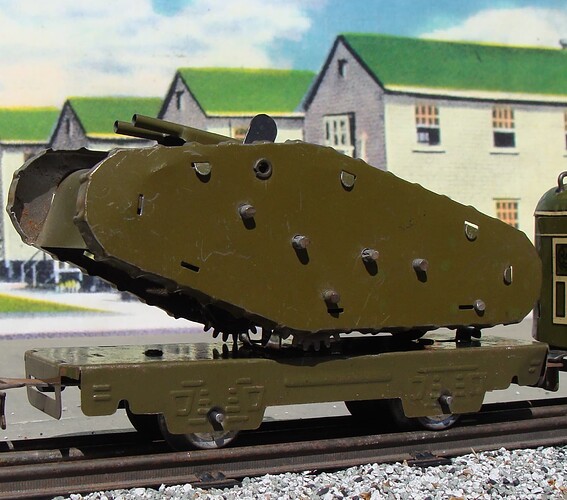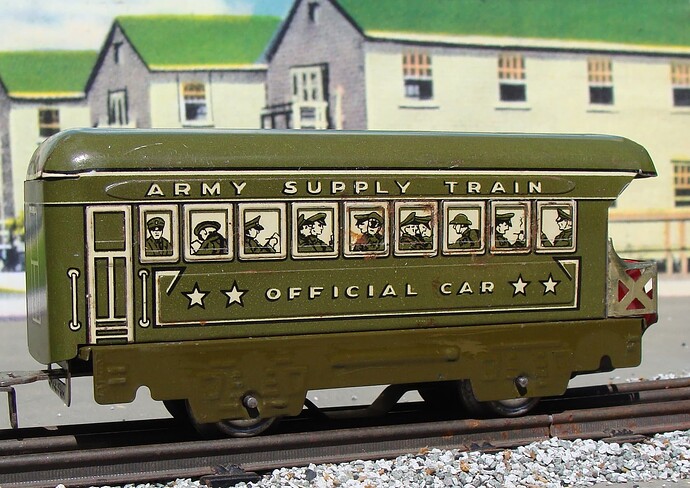In the early 1990s, Marx enthusiasts James and Debby Flynn negotiated a licensing agreement with the owners of the Marx trademark that allowed them to resume the production of Marx lithographed tin trains using original Marx tooling and new and different lithography.
As part of their New Marx Trains line, the Flynns produced a 20th Century Limited lithographed tin train headed up by a locomotive clearly intended to represent a Dreyfuss Hudson. This locomotive was a modified version a Canadian Pacific locomotive, made using the original CP tooling. (The Marx Company could easily have come up with something similar in the late 1930s. Why it chose not to is something best left to the advanced Marx scholars to debate.)
11 Likes
My avatar picture has a Marx 21 in the picture, if you’ve noticed…
It’s a great looking engine.
Paul
5 Likes
Now you’re talking my language!
Not Marx but that’s only because I haven’t found one yet! 
PS I’ve always loved the excellent use of lithography on the Flynn Dreyfuss! It was an elegant solution that let them add extra details!
8 Likes
Bringing this post over from the Alco thread 
Here’s some more accessories. First, the manual drawbridge. Sorry for the clunky background: I had no better way to do the pics at the time. The black, L-side brackets are removable if the ends are permanently affixed. No motor, of course, but the crank works well with a decent gear ratio that means it doesn’t take forever to raise and lower.
Next is a selection of pieces. A tall light tower, a gate crossing and three telephone poles.
Finally, here’s three lamp posts. I like the added details: the fire call box, the post/letter drop, and the electrical box.
Marx didn’t always have the Gee-Wjhiz-Bang that Lionel did, but their pieces were innovative and sometimes better looking.
8 Likes
Ahh, I thought those photos looked familiar.
2 Likes
In the late 1930s, model railroading began to evolve into a hobby for adult men. These “scale modelers,” as they came to be known, built elaborate, permanent layouts equipped with remote control switches and uncouplers, and conducted prototypical railroad operations using realistically scaled locomotives and rolling stock.
To appeal to these “scale modelers,” in 1937, Marx mounted some of its six-inch cars onto frames fitted with four-wheel “heavy service” swivel trucks. While still toy-like in appearance, these 6-inch 8-wheel cars did represent a step towards prototype realism.
These six-inch eight-wheel cars came with two different types of couplers: tab & slot, and automatic.
7 Likes
Mechanically complex and expensive to produce, Marx’s first automatic couplers required cars to be lined up in a single direction for the couplers to work.
8 Likes
When used on layouts equipped with remote control switches and uncoupling units, Marx’s 6-inch 8-wheel cars with one-way automatic couplers did allow hobbyists to conduct railroad operations by remote control.
7 Likes
Once the United States became involved in World War II, the 6-inch 8-wheel cars were discontinued and never revived. They were replaced by Marx’s 3/16-inch scale lithographed metal cars which not only had scale realism but could be coupled and uncoupled from either direction.
9 Likes
Although many of Marx’s 6-inch 8-wheel cars with one-way automatic couplers still survive today, a better option for those who collect 6-inch cars and who want to use them to conduct remote control railroad operations is to remount their 6-inch 4-wheel cars onto 8-wheel frames with tilt couplers.
10 Likes
In 1939, the year that Marx introduced its Army Supply Train, Europe was teetering on the brink of war. While many Americans were opposed to the United States becoming involved in another foreign conflict, most everybody agreed that the best way to keep the country safe was to strengthen its armed forces. The Army Supply Train helped to encourage this preparedness spirit among children by allowing them to play at transporting tanks, planes, field guns and other equipment needed to fight imaginary battles with an invading foe.
9 Likes
The locomotive usually found at the head of a Marx pre-war Army Supply Train was a Canadian Pacific-type engine painted olive drab and lettered “Army Supply Train.”
9 Likes
Accompanying the Canadian Pacific-type locomotive was an olive drab version of the Canadian Pacific tender, lettered “Army Supply Train” and bearing the emblem of the U.S. Army Quartermaster Corps, which, in pre-war years, oversaw the moving of Army supplies via rail.
9 Likes
Between 1939 and 1942, at least three different variants of the military Search Light Car were produced. For mechanical sets, there was also a non-operating “dummy” searchlight with a mirror lens.
8 Likes
This flatcar-mounted Field Gun (1939-1942) produced a clicking sound when its crank was turned. Other flatcar-mounted guns could actually fire wooden shells.
9 Likes
Several different tank loads were available for the Army Supply Train. Seen here is the one patterned after the British Mark II tank. Once removed from its flatcar, the tank’s clockwork motor allowed it to move under its own power.
9 Likes
In 1939, when this U.S. Army Signal Corps Radio Car was introduced, the sending and receiving of “wireless” radio communications from a moving train involved technology that was controlled exclusively by the military. Marx’s Radio Car was available with and without the twin aerials on its roof.
8 Likes
The last car in a Marx Army Supply Train consist was usually the Official Car, a “General Headquarters on Wheels” occupied by a senior officer and his staff. (The two stars, both fore and aft, indicate the possibility of a Major General being on board!) Adapted from a standard Marx six-inch Observation Car, it came with a lighted drumhead.
Ironically, the Army Supply Train itself became a casualty of war in 1942, after Marx stopped producing toys to do defense work for the government. Although Marx resumed producing military electric train sets in the 1950s, these post-war sets lack the variety of rolling stock and much of the visual appeal of the pre-war sets.
8 Likes
Well that’s neat as all get out.
3 Likes
Aren’t those tanks fairly rare?
3 Likes


